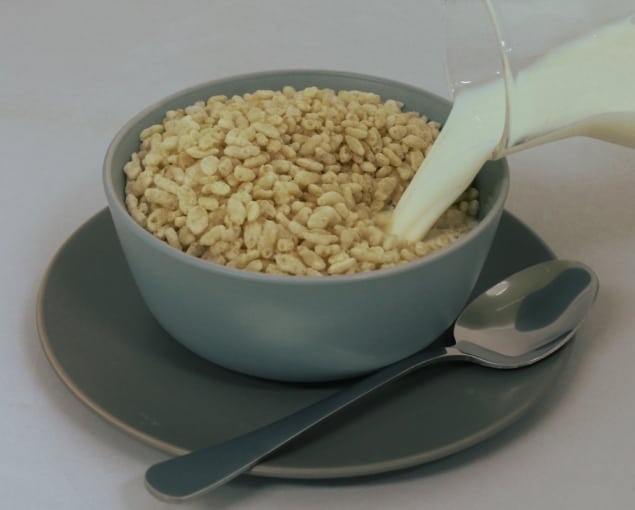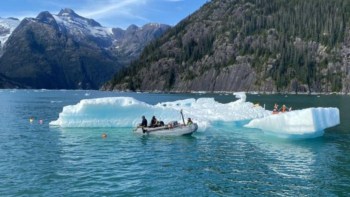
A popular breakfast choice has provided insight into the collapse of rockfill dams, sinkholes and ice shelves. A team from the University of Sydney, Australia, added milk to puffed rice in a tube under pressure to simulate the crumbling of brittle porous materials in contact with fluids.
Once the puffed rice in the milk at the bottom of the tube was fully soaked and turned to mush, the grains above sank downwards in a series of jerks that the team dubbed ricequakes. A clicking noise accompanied each quake and the time between them increased roughly linearly over time. Researchers Itai Einav and François Guillard described the sounds as like the clicking beats of a slowing metronome.
Each jerk occurs when a micropore within the puffed rice collapses because partial saturation with milk has reduced its crushing strength, Einav and Guillard believe. This leads to a sudden, brief drop in stress. Even though they may not be visibly wet from the outside, puffed rice grains immediately above the level of the milk are likely to contain liquid due to capillary action through their micropores.
Between each jerk, the puffed rice deformed by creep. Puffed rice is very porous, brittle and soft so it’s handy for demos in the lab – it’s easy to compact within a small space and short timescale.
According to the team’s “crushing wave model” of puffed rice failure, the time between consecutive quakes scales with the square of the micropore size. In geological materials such as soft coastal carbonates or ice sheets, the micropores are much smaller than the typical 0.6 mm of puffed rice and the delays between quakes would be hardly distinguishable.

The gradual collapse of micropores could still influence the creep rate of these materials, however. “The time signatures of the instabilities in our experiments are reminiscent of observations of tidal icequakes from the Whillans Ice Stream, Antarctica, which exhibit an astonishingly similar pattern of incremental displacements,” write Einav and Guillard in Science Advances. The slowdown in the waiting time between icequakes happens over many years and is thus much milder than the slowdown of ricequakes, they add.
A scaled-up version of the model, the researchers believe, could be relevant to geological pressures and durations in crustal rocks and ice sheets. But first they’d like to test a wider range of brittle porous solids and chemically active fluids in the lab, as well as trying out different gravity conditions.
This is not the first time that researchers have replicated rock deformation with a foodstuff; dry cornstarch is useful for modelling brittle crustal rock whilst puffed rice has also revealed compaction patterns in dry snow.
The team published their findings in Science Advances.



